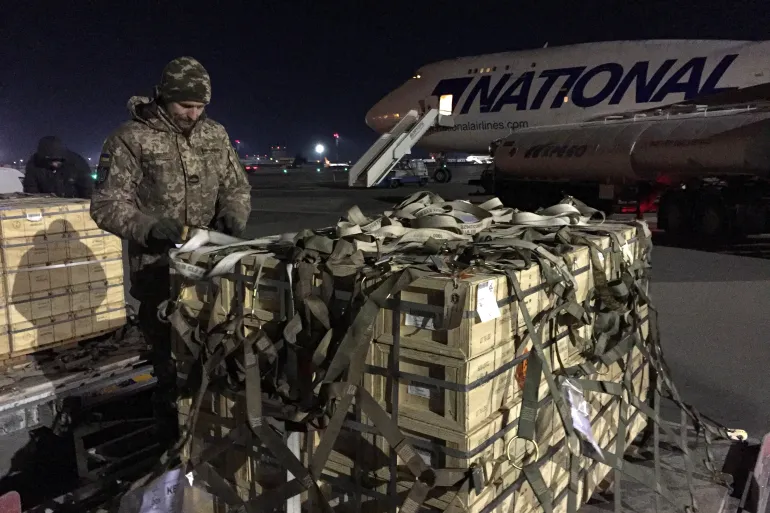
War has been raging in Ukraine since February 24. Without the support of the United States and the European Union, a sustained defence effort similar to what the world has witnessed would likely have been inconceivable.
But how much support has Ukraine received, and what difference has it made?
Only last week, US President Joe Biden pledged another $45bn in support for Ukraine – a package Congress will now negotiate over. If the proposal is passed, it would be the fourth US aid package for Ukraine and the total money allocated for Ukraine since February would be nearly $100bn.
These staggering figures have led Russian apologist voices such as Republican Representative Marjorie Taylor Greene to claim that Ukraine has turned into a proxy war conducted by the US and against Russia. But it is not merely the fringe of the Grand Old Party that seems inclined to repeat Russian propaganda.
British newspaper The Independent published an opinion piece by its US correspondent titled: “It’s time to stop pretending what’s happening in Ukraine is anything other than a US proxy war.”
Meanwhile, various international relations scholars and other experts in the field beg to differ.
“It is clearly not a proxy war,” Vladimir Rauta, a lecturer in politics and international relations at the University of Reading, told Al Jazeera.
“Proxy wars are indirect wars, often waged covertly, deniably, and outside the bounds of international law. The US-Ukraine partnership is a classic case of military and economic bilateral assistance,” he said.
“The only proxy [war] was the one Russia waged against Ukraine since 2014 when it started supporting, training, and covertly aiding separatist groups in the Donbas.”





















